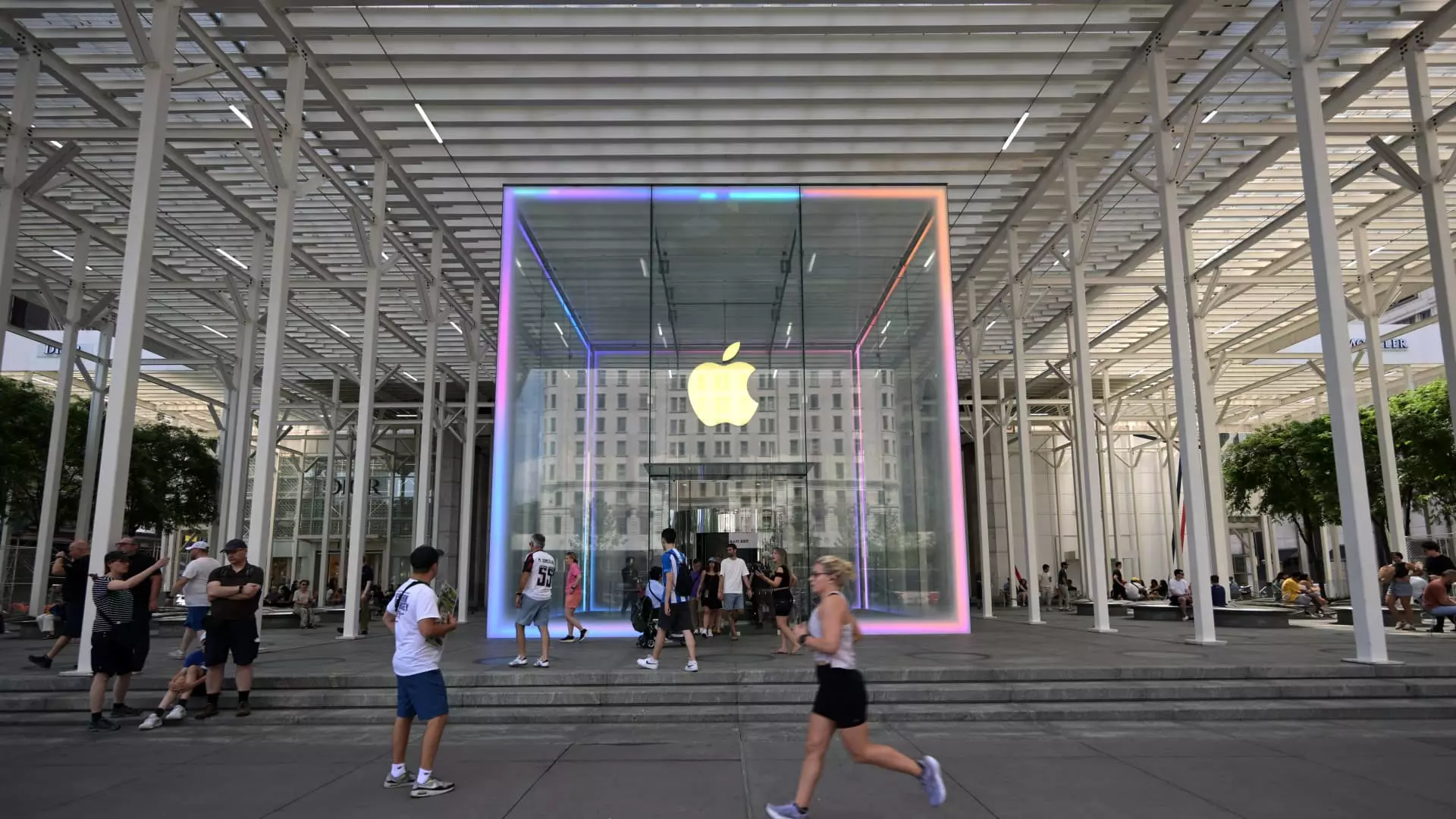In the relentless ebb and flow of the stock market, headlines often paint a picture of stability when companies report their quarterly earnings. However, beneath this superficial calm lies a complex power dynamic rooted in investor psychology, corporate strategy, and macroeconomic signals. Apple’s recent impressive earnings—marking its largest revenue growth in nearly two years—serve as a prime example. The tech giant’s 10% revenue increase and surpassing estimates by nearly $5 billion reinforce the narrative that innovation and consumer loyalty still command market respect. Yet, one must ask: does this real strength translate into sustainable dominance, or is it merely another data point fueled by short-term consumer spending? True market power is measured not just by numbers but by investors’ ability to interpret these figures in a broader economic context.
Apple’s resilience showcases the centrality of technology giants in the modern economy, commanding a financial prowess that often eclipses traditional industries. Investors’ focus on the company’s top and bottom-line beats reflects a belief in its strategic agility. Still, this optimism must be tempered with skepticism; market leaders can quickly falter if innovation stalls or regulatory pressures mount. The rhetorical power of earnings beats is seductive but insufficient to guarantee enduring dominance — a fact that savvy investors understand all too well.
Market Winners and Losers: A Reflection of Structural Shifts
While some companies like Clorox and First Solar demonstrated solid performance after-hours, the broader market sentiment reveals a more nuanced picture. Clorox’s modest uptick underscores a resilient consumer staples sector, but it also hints at a shift in consumer priorities—favoring reliability over novelty. Meanwhile, First Solar’s robust earnings highlight the strategic pivot toward renewable energy technology, signaling a potential shift in power from traditional fossil fuels to cleaner alternatives. Yet, these gains are fragile, susceptible to government policy changes and international trade tensions.
In stark contrast, Amazon’s disappointing forecast underscores the inherent volatility and unpredictability of the e-commerce sector. The 3% sell-off reflects investor trepidation about future growth, despite strong recent results. It exemplifies how market power is often fleeting; today’s tech juggernaut can become tomorrow’s cautionary tale if growth stalls or external threats undermine confidence. Amazon’s forecast reveals the thin line between dominance and decline, emphasizing that even industry leaders are vulnerable to the weight of long-term strategic uncertainties.
The Fragile Confidence Fueled by Disappointing Outlooks
The post-market decline in Stryker’s shares draws attention to how expectations and external factors like tariffs can swiftly erode investor confidence. The company’s failure to meet high expectations and the anticipated $175 million impact from tariffs underscore the vulnerability of even large, well-established firms. This vulnerability illustrates the waning power of corporate resilience in the face of geopolitical tensions. Investors are increasingly punishing companies that cannot navigate these external shocks, revealing that market power is as much about managing risk as it is about delivering results.
Conversely, Monolithic Power’s rally reflects the market’s appetite for semiconductor companies with promising guidance, demonstrating that strategic positioning and future sales optimism can temporarily elevate companies beyond their current fundamentals. It underscores that in the current environment, perception often outweighs reality—power resides in future potential more than immediate results.
The Rise and Fall of Market Sentiment: A Tale of Two Companies
Reddit’s extraordinary 14% surge exemplifies how sentiment and expectations can propel stocks to new heights, even amid broader market volatility. With second-quarter earnings far exceeding analysts’ forecasts and optimistic guidance for the next quarter, Reddit illustrates how social media-driven narratives and user engagement now significantly influence market power dynamics. This highlights a profound shift: power is increasingly rooted in consumer engagement and perception rather than traditional corporate metrics alone. However, such rapid gains are perilous; sustaining this level of overperformance is challenging, and the threat of a correction looms.
Meanwhile, Coinbase’s decline of over 6% marks the fragility of crypto-related companies, particularly when revenue misses and trading volumes fall short of expectations. It encapsulates the fragility of market sentiment—how quickly investor confidence can evaporate when numbers don’t align with bullish narratives. It reveals that in markets increasingly driven by speculative assets, power relies heavily on perceived momentum rather than fundamentals.
### Closing Thoughts
In sum, the current market landscape exemplifies a delicate balance of power—where strength can be fleeting, and perception often trumps reality. While some companies leverage solid earnings to bolster confidence, external shocks and future uncertainties threaten this stability. The true lesson lies in recognizing that market power is fluid, shaped as much by external geopolitical and macroeconomic factors as by internal strategic execution. Those who understand this dynamic—center-right wing liberals who value pragmatic resilience—will navigate these turbulent waters with a keener eye for risk and opportunity.

